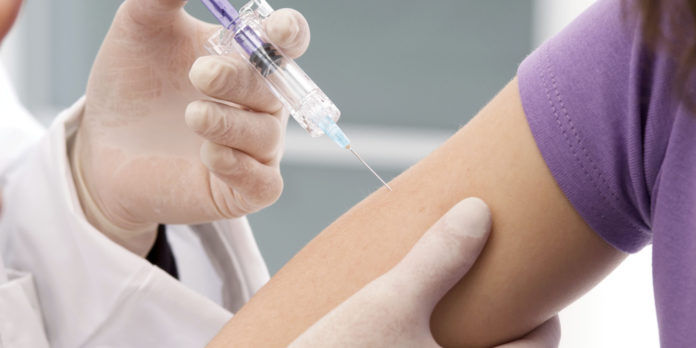
The Food and Drug Administration approved a new vaccine Wednesday that protects against more forms of cancer-causing viruses.
The new version of the vaccine, called Gardasil 9, prevents infection with nine strains of the cancer-causing human papillomavirus (HPV). Current vaccines protect against either two or four of the viruses.
Gardasil 9 is approved for use in females ages 9 through 26 and males ages 9 through 15 for the prevention of cervical, vulvar, vaginal and anal cancers caused by HPV types 16, 18, 31, 33, 45, 52 and 58, and for the prevention of genital warts caused by HPV types 6 or 11, the FDA said in a statement.
The five new HPV types covered by the vaccine —31, 33, 45, 52 and 58— cause about 20 percent of cervical cancers not previously covered by FDA-approved HPV vaccines.
With the expanded protection, the FDA says Gardasil 9 has the potential to prevent approximately 90 percent of cervical, vulvar, vaginal and anal cancers.
“Vaccination is a critical public health measure for lowering the risk of most cervical, genital and anal cancers caused by HPV,” Karen Midthun, M.D., director of the FDA’s Center for Biologics Evaluation and Research, said in a statement. “The approval of Gardasil 9 provides broader protection against HPV-related cancers.
HPV is extremely common: about 75 to 80 percent of men and women are infected during their lifetime. Most don’t show symptoms.
The viruses cause warts and other lesions and two in particular, HPV 16 and HPV 18, cause cancers of the cervix, anus and penis, as well as the mouth and throat. Types 6 and 11 can cause lesions and genital warts. The Centers for Disease Control and Prevention says 14 million people become newly infected each year with the cancer-causing forms of HPV.
Federal guidelines call for all boys and girls to get three doses of the vaccine, starting at age 11 or 12. But most aren’t following those recommendations. Only a third of girls who should have finished the series have received all three doses, and the record’s even worse for boys. While 57 percent of pre-teen or teen girls have received at least one dose of HPV, only 35 percent of boys have, CDC says.
